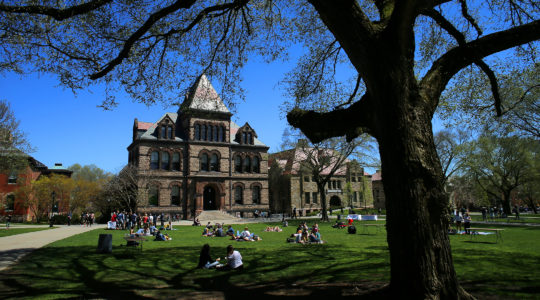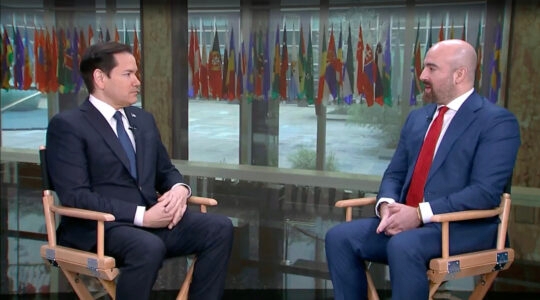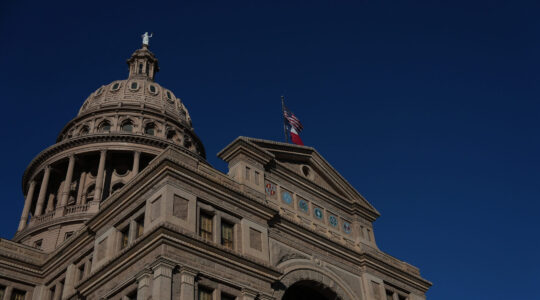WASHINGTON (JTA) — With the Norway attacks fresh in mind and the 10-year anniversary of the Sept. 11 attacks fast approaching, are U.S. authorities paying attention to the right kinds of threats?
The fear is that with polarization intensifying in America, extremists might mark the 10th anniversary of Sept. 11 with a major attack, said Heidi Beirich, the research director of the Southern Poverty Law Center, which tracks extremists in the United States.
And Beirich said the July 22 mass killing of 77 people by Anders Behring Breivik, an anti-Muslim extremist in Norway, “raises considerable fears that something similar could happen here in the United States.”
Asked about homegrown threats, an FBI spokeswoman pointed JTA to an April 14 speech by Mark Giuliano, the assistant director of the FBI’s counterterrorism division, at the Washington Institute for Near East Policy.
In his speech, Giuliano outlined four areas of focus. Three have to do with Muslim terrorism or its potential: al-Qaeda, homegrown Islamists and the changes roiling the Arab world. The fourth was identified as domestic terrorism.
“The FBI continues to maintain a robust effort against domestic terrorism,” Giuliano said in the speech. “The domestic terrorism movement continues to remain active, and several recent domestic terrorism incidents demonstrate the scope of the threat.”
Giuliano cited as examples three recent successes for the FBI: the March 2010 indictment of nine members of a Michigan militia who planned to kill police; a pipe bomb found before it exploded at a Martin Luther King Day parade in Spokane, Wash., this year and the arrest of a suspect; and the arrests of three suspects in Fairbanks, Alaska, on weapons charges.
After the attacks in Norway, U.S. officials offered assurances that they are paying close attention to the homegrown potential for violence, including from white extremists.
A White House strategy published Aug. 3 on encouraging authorities to use community outreach to prevent terrorism recruitment focused mostly on the Islamist threat, but made clear that anti-government extremists still posed a danger.
“In recent history, our country has faced plots by neo-Nazis and other anti-Semitic hate groups, racial supremacists, and international and domestic terrorist groups,” it said, “and since the September 11 attacks, we have faced an expanded range of plots and attacks in the United States inspired or directed by al-Qaeda and its affiliates and adherents as well as other violent extremists.”
In an interview with JTA, the FBI spokeswoman would not comment on whether the United States has seen a rise in extremism or if there was a focus on particular regions of the country.
Matthew Levitt, the Washington Institute’s senior fellow analyzing counterterrorism who hosted Giuliano, said the U.S. government has been concerned about the possibility of an increase in violence from extremists since the election of Barack Obama as president.
“It was the first time an African American was elected president, and it was a shot in the arm” to white supremacist extremists, he said.
Levitt, who was a counterterrorism analyst for the U.S. Treasury in the mid-2000s, said the FBI’s focus is still on Islamist terror, but that it’s not neglecting homegrown threats.
“They are focusing on jihadi networks, which are by any measure the major threat,” Levitt said, but noting that Giuliano at the April 16 meeting at the institute “made it a point that the bureau stills has an independent section focused on domestic terrorism.”
The Southern Poverty Law Center says the attention paid to domestic terrorism is inadequate.
“Are we safe from the threat of right-wing terrorism?” Mark Potok, the director of publications for the center, rhetorically asks in the latest issue of Intelligence Report, its signature publication. “As the Patriot movement that wreaked so much havoc in the 1990s comes roaring back and hate groups soar to record levels, is the American population being protected adequately?”
To underscore the threat, the law center ran an accompanying list of planned and successful homegrown terrorist attacks since the 1995 Oklahoma City bombing that is top-heavy with events since June 2008, when Obama emerged as the presidential front-runner. Of the 31 events listed since June ’08, only one is by a purely indigenous Muslim group. The rest were carried out by an array of militias and lone wolves seemingly motivated by anti-government, anti-abortion, anti-Muslim and racist rhetoric.
Some of the attacks had an anti-Semitic component, including the 2009 slaying of three Pittsburgh policemen by an extremist obsessed with the notion of a “cabal” of Jews running the United States, and the fatal shooting that same year at the U.S. Holocaust Memorial Museum.
Left off the law center’s list are recent planned attacks by groups or individuals backed by overseas Islamists — for instance, the 2010 Times Square bombing attempt. Pakistani extremists might have funded that attempt, authorities have said.
The group listed 23 attacks from Sept. 11, 2001 until Obama’s emergence as the likely president.
Other groups that track extremists say it doesn’t help much to track one extreme separately from another; a holistic strategy is required.
“We have extremists across the ideological spectrum in this country,” said Oren Segal, the co-director of the Anti-Defamation League’s Center on Extremism. “To describe one threat as more dangerous than another is not a luxury we have.”
Levitt of the Washington Institute agreed.
“A lot of the efforts the bureau and others have done have been efforts to constrict the environment whatever the ideology,” he said, citing as an example tracking the sale of quantities of fertilizer that could be used to build a large bomb.
JTA has documented Jewish history in real-time for over a century. Keep our journalism strong by joining us in supporting independent, award-winning reporting.





